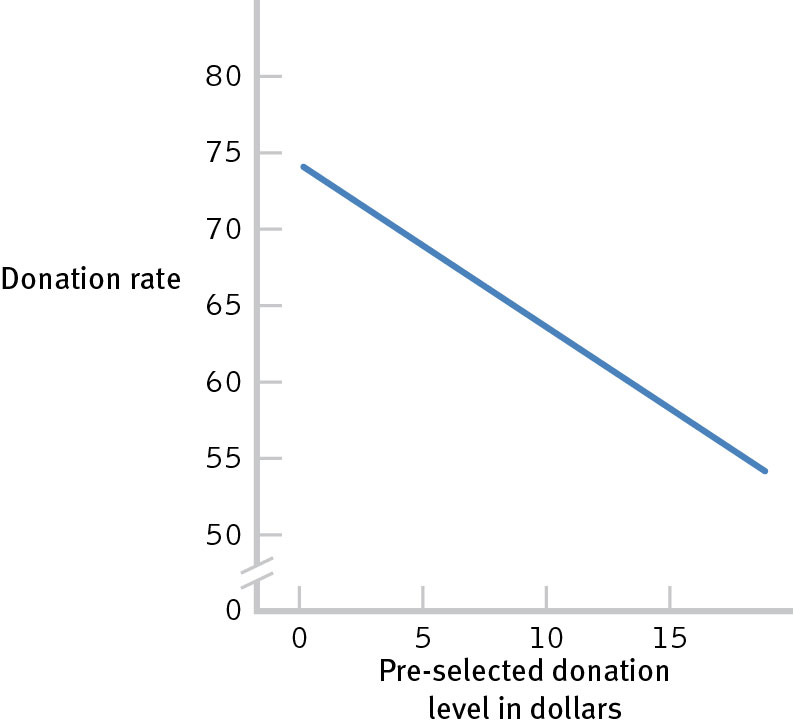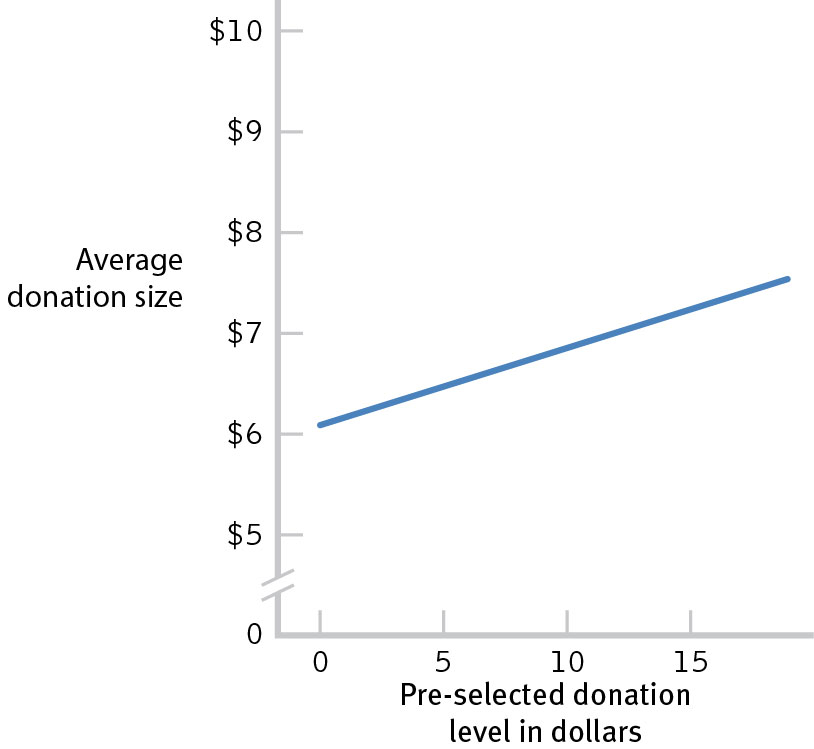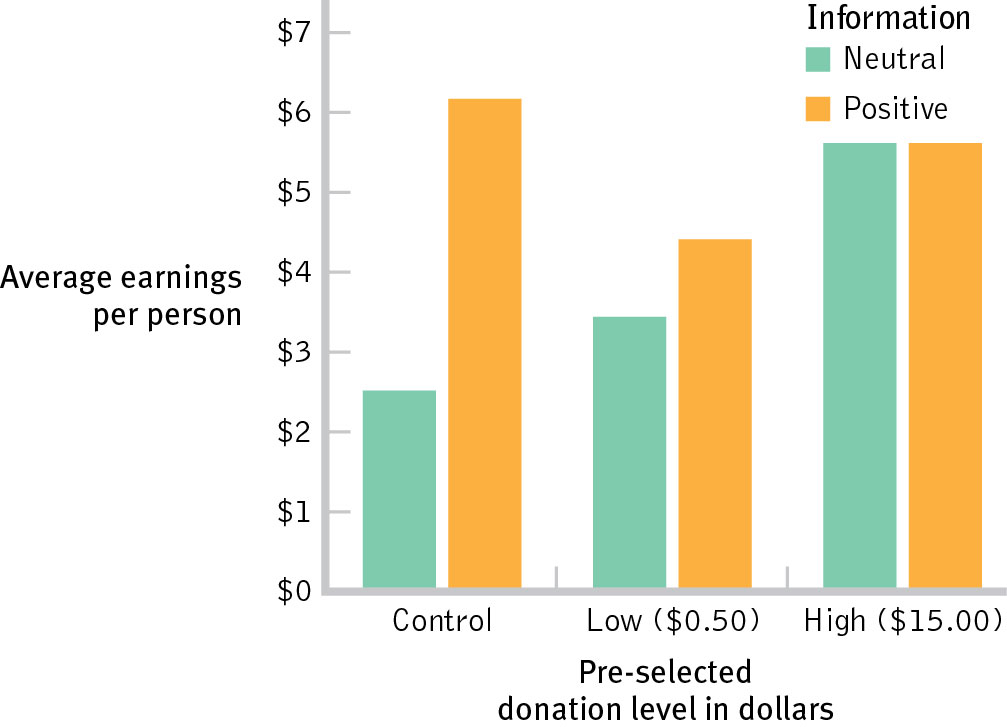How Much Are You Willing to Give?
1.1 VISUAL DISPLAYS OF DATA: HOW MUCH ARE YOU WILLING TO GIVE?1 of 9
Welcome
How Much Are You Willing to Give?
Authors:
Kelly M. Goedert, Seton Hall University
Susan A. Nolan, Seton Hall University
Kaylise D. Algrim, Seton Hall University

1.2 VISUAL DISPLAYS OF DATA: HOW MUCH ARE YOU WILLING TO GIVE?2 of 9
To investigate whether suggesting a default amount affects charitable giving, Goswami and Urminsky (2016) conducted an online study in which they told participants that they would be entered into a drawing to win $20. The participants were then told about a charity and asked if they would be willing to donate part of their winnings to that charity (in the event that they won the drawing). Six donation levels were listed: $0, $0.50, $2, $5, $10, and $15, with one of the options preselected. The participant could either stick with the preselected donation level or select a different option.

1.3 VISUAL DISPLAYS OF DATA: HOW MUCH ARE YOU WILLING TO GIVE?3 of 9

1.4 VISUAL DISPLAYS OF DATA: HOW MUCH ARE YOU WILLING TO GIVE?4 of 9

1.5 VISUAL DISPLAYS OF DATA: HOW MUCH ARE YOU WILLING TO GIVE?5 of 9

1.6 VISUAL DISPLAYS OF DATA: HOW MUCH ARE YOU WILLING TO GIVE?6 of 9

1.7 VISUAL DISPLAYS OF DATA: HOW MUCH ARE YOU WILLING TO GIVE?7 of 9

1.8 VISUAL DISPLAYS OF DATA: HOW MUCH ARE YOU WILLING TO GIVE?8 of 9

1.9 VISUAL DISPLAYS OF DATA: HOW MUCH ARE YOU WILLING TO GIVE?9 of 9
The bottom line: Whether you give a little or give a lot, donations do add up. If you want people to give more, then you might suggest that they do, or you might give them positive information about the charity.

REFERENCES
Goswami, I., & Urminsky, O. (2016). When should the ask be a nudge? The effect of default amounts on charitable donations. Journal of Marketing Research, 53, 829–846. https://doi.org/10.1509/jmr.15.0001